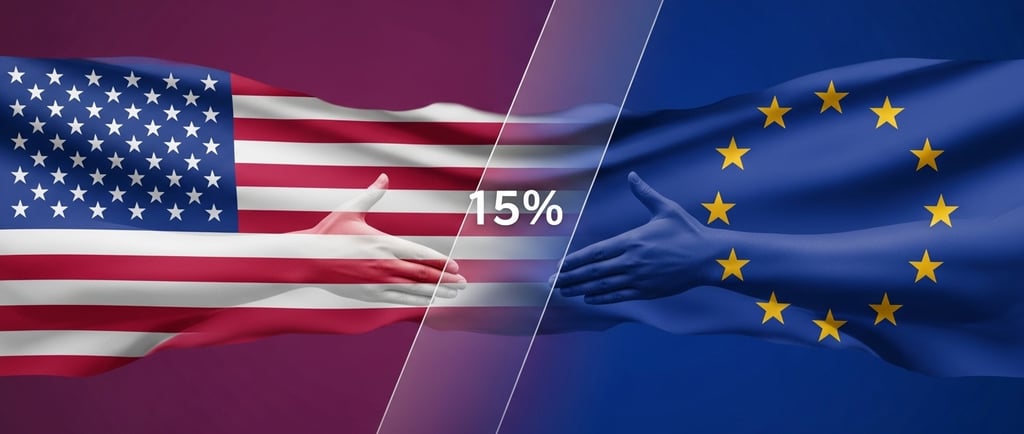Deal Done: How the 15% U.S.-EU Pact Benefits the American Economy
In high-stakes negotiations that captured the world's attention, the United States and the European Union reached a historic agreement this Sunday, July 27th.
Cristian Ianowich
7/28/20252 min read


In high-stakes negotiations that captured the world's attention, the United States and the European Union reached a historic agreement this Sunday, July 27th. The pact establishes a baseline tariff of 15% on most European goods, averting an imminent trade war that could have cost both economies trillions.
For Americans, the deal is being presented as a strategic victory focused on strengthening the domestic economy. But what does this new 15% landscape really mean for American businesses and citizens? Let's break down the key benefits.
A Massive Energy and Investment Package for the U.S.
Perhaps the most impactful parts of the agreement are the financial commitments made by the European Union, which will inject hundreds of billions of dollars directly into the American economy.
$750 Billion in Energy Purchases: The EU has committed to buying $750 billion worth of U.S. energy products (gas, oil, and nuclear fuel) over the next three years. This not only provides a massive boost to the American energy sector, securing jobs and growth, but it also positions the U.S. as a crucial energy supplier to Europe as it seeks to reduce its dependence on Russia.
$600 Billion in New Investments: Beyond energy, the deal includes a European commitment to invest an additional $600 billion across various sectors of the American economy. This influx of capital has the potential to drive job creation and the development of new technologies and industries on U.S. soil.
Relief and Predictability for Key Sectors
One of the greatest benefits of any deal is the end of uncertainty. By avoiding the threat of a 30% tariff that was set to take effect on August 1st, the pact brings much-needed stability.
The Automotive Sector: The American auto industry, which has a highly integrated supply chain with Europe, can breathe a sigh of relief. The 15% tariff on cars, while still a cost, is much lower than the 27.5% the sector was facing, offering predictability for planning and helping to stabilize prices for consumers.
Opening Markets with Zero Tariffs: The agreement also establishes that some strategic products will have "zero-for-zero" tariffs on both sides. This includes aircraft and parts, certain chemicals, and some agricultural items. For American companies in these sectors, like Boeing, this means full access to the European market, boosting exports and competitiveness.
Strengthening America's Position in Global Trade
By securing a deal on these terms, the United States is demonstrating a position of strength in global negotiations. The administration argues that the pact corrects historical trade imbalances and ensures that U.S. trade partners contribute more fairly to the American economy.
In short, the 15% agreement with the European Union is much more than a simple number. It represents a package of strategic advantages for the United States: it secures massive investments and job creation, boosts the energy sector, protects the auto industry from higher rates, and gives American businesses a more stable and predictable environment to operate in.
